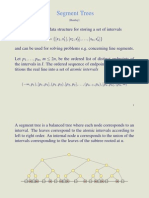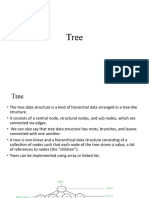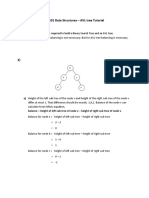0% found this document useful (0 votes)
32 views7 pagesSegment Tree
A segment tree is a binary tree structure that efficiently handles range queries and updates on an array, allowing operations like sum, min, max, and more in O(log n) time. It is built by dividing the array into segments and storing relevant information in its nodes, making it versatile for various problems. The document also explains how to construct and operate on a segment tree, including query and update functions.
Uploaded by
minakshiCopyright
© © All Rights Reserved
We take content rights seriously. If you suspect this is your content, claim it here.
Available Formats
Download as DOCX, PDF, TXT or read online on Scribd
0% found this document useful (0 votes)
32 views7 pagesSegment Tree
A segment tree is a binary tree structure that efficiently handles range queries and updates on an array, allowing operations like sum, min, max, and more in O(log n) time. It is built by dividing the array into segments and storing relevant information in its nodes, making it versatile for various problems. The document also explains how to construct and operate on a segment tree, including query and update functions.
Uploaded by
minakshiCopyright
© © All Rights Reserved
We take content rights seriously. If you suspect this is your content, claim it here.
Available Formats
Download as DOCX, PDF, TXT or read online on Scribd
/ 7
































































































